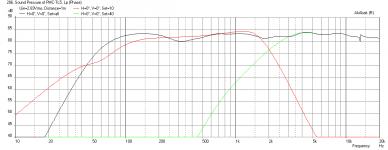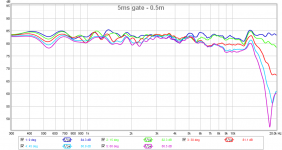This speaker started as a spinoff from this thread where I was studying the effects of different levels of stuffing/damping in a TL:
http://www.diyaudio.com/forums/multi-way/281281-pmc-tl-stuffing.html
The speaker that inspired this was the PMC TB-1:
Which has a 48in long internal path TL with the following damping scheme, which I think provides a borderline critically-damped aperiodic TL based on the measurements I have seen on-line:

There was a rather lengthy debate in that thread about whether or not the TB1 follows Bailey's TL approach and whether or not a proper TL should have single or double impedance peak. Rather than debate it, I decided to model it.
I then went on to model and design my own little TL box to study the effect of damping but using drivers I had on-hand: a Dayton Classic Series DC130A-8 5.25in midwoofer and a Dayton DC28F-8 silk dome tweeter. Both of these drivers actually have quite nice published and measured performance specs and are great sounding high-value drivers. You might be hard pressed to find another 5.25in class midwoofer with the same performance for $20. Similarly, the DC28F is an extremely smooth sounding soft dome with low distortion and flat frequency response.
Anyhow, my design constraints were to use approximately the same 48in long TL that the PMC TB-1 has, and about the same physical format. I put the vent in an up-firing position at first, but eventually went with forward firing to gain a few dB of sensitivity in the bass. I also wanted a tuning frequency fb of about 60Hz - 80Hz depending on the damping scheme used.
The design of the TL was as follows with a 6.0in wide internal dimension:
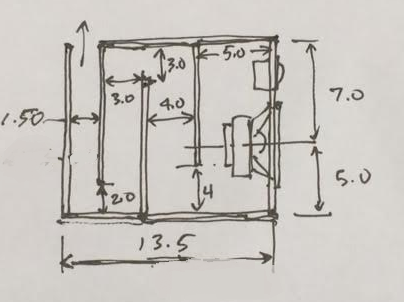
The predicted frequency response for this TL depended heavily on the amount of stuffing inside. Here are 3 cases of light, moderate, and dense stuffing. As expected, each case is a tradeoff in bass extension and SPL for light damping with lower group delay and improved transient response with dense stuffing. The predicted impedance curves go from double peak for light stuffing, to single peak for dense stuffing. The dense case tends to an aperiodic TL.
Light stuffing:
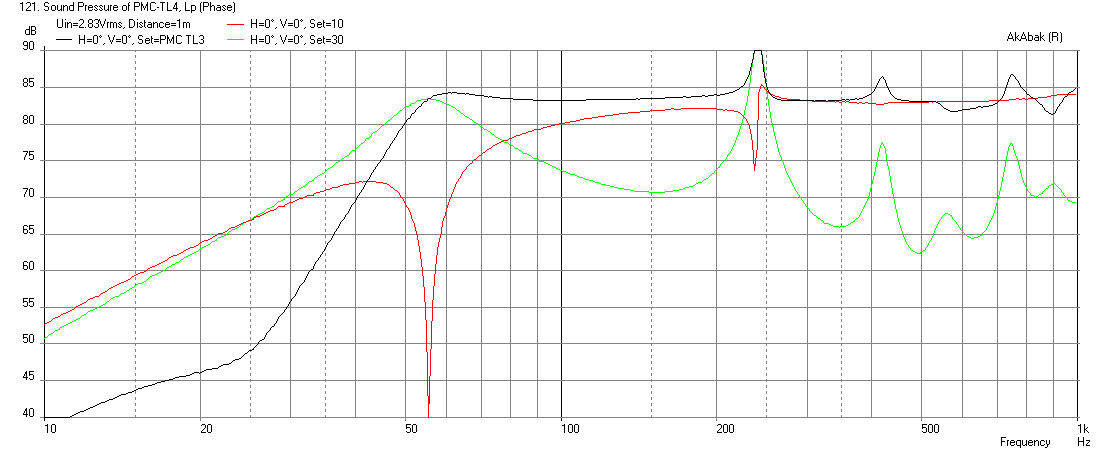
Moderate stuffing:
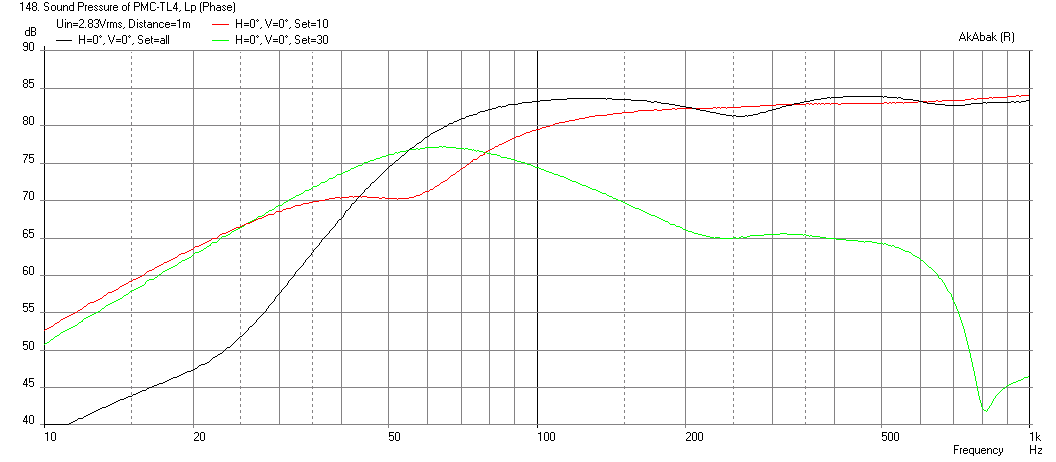
Dense stuffing:
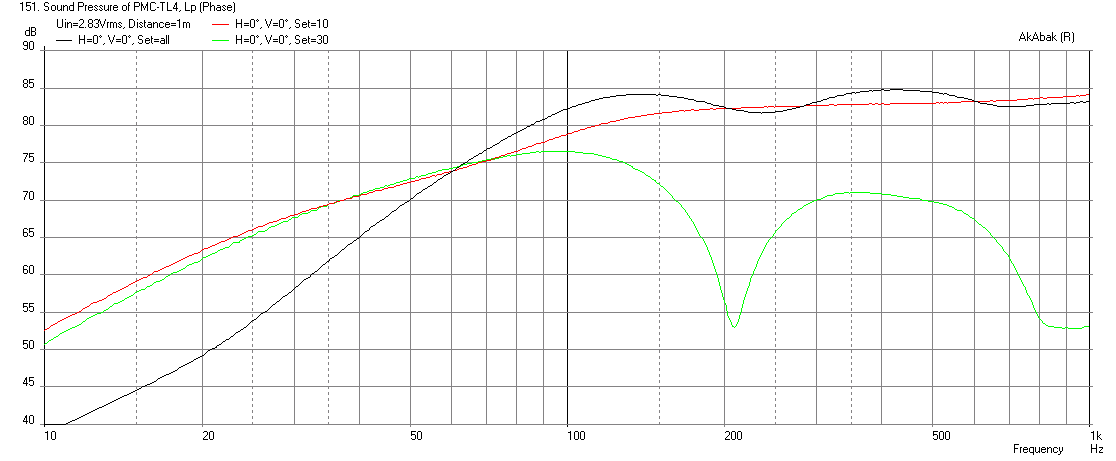
Here are the corresponding Group Delays for the light to dense stuffing, the GD goes from 16ms down to under 5ms at 50Hz which is about the same as a sealed cabinet, but with deeper bass extension.
Light:

Dense:

Here is the predicted impedance for light stuffing:

Moderate stuffing:

Dense stuffing:

The predicted speaker cone excursion goes from a classic double peak 4th order:

To what you would see in an aperiodic TL or a sealed cabinet:

So these plots intrigued me and I decided to go with a prototype build in foam core. I was aiming for the moderate to dense case somewhere in between. I thought it important to get at least a -3dB point at 80Hz to get a sense of some bass output. I redid the model with front exit vent and the stuffing plan closer to how I will implement it using loosely teased out polyfill. Here is the predicted frequency response with a 2kHz XO and baffle step loses included:
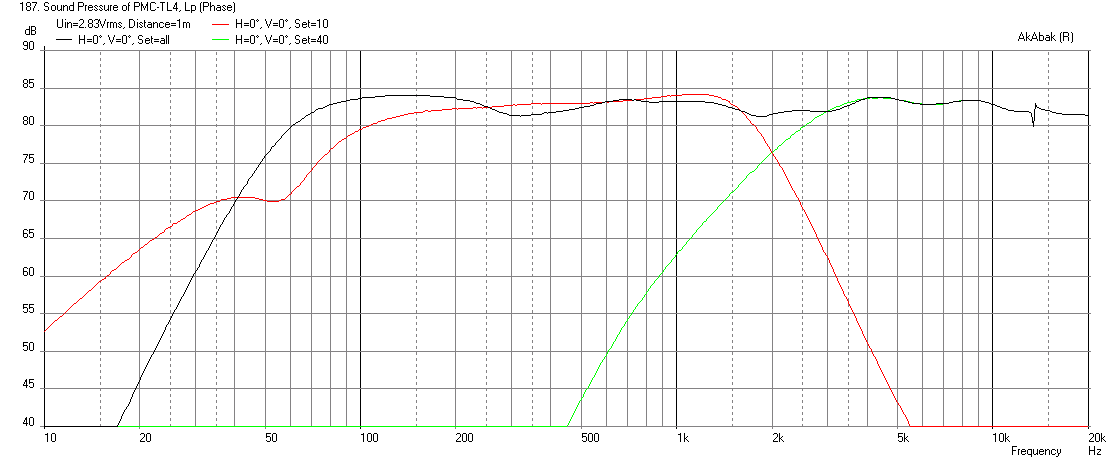
And here is the predicted GD:
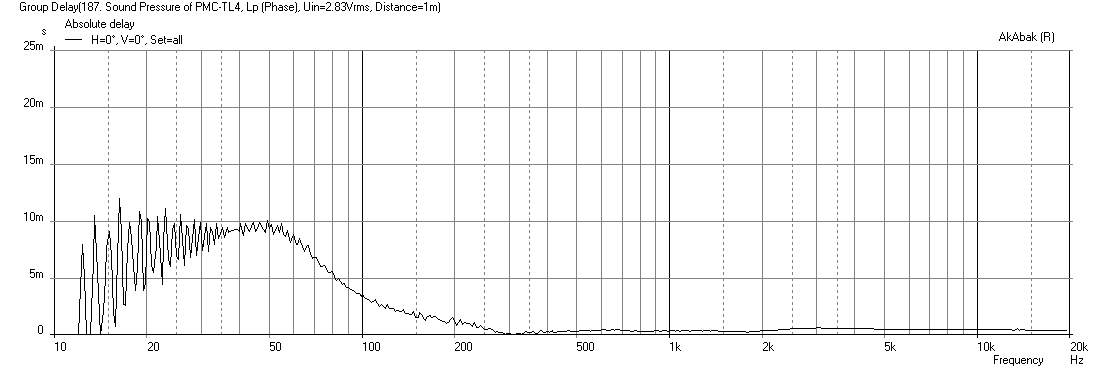
If stuffing is added to the final leg, here is the predicted response - about 80Hz f3:
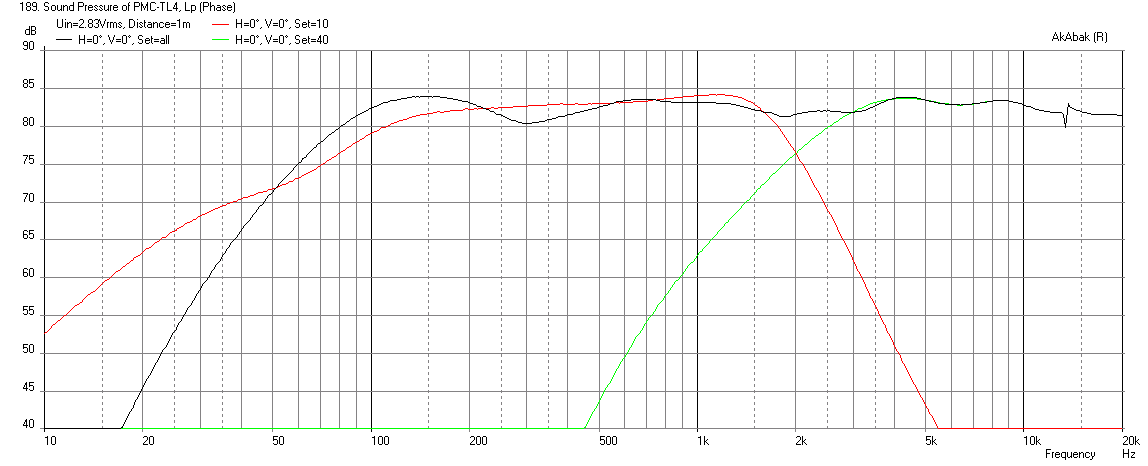
With about 7ms GD at 50Hz:

With a semi-bordering on aperiodic TL impedance peak with a mild double bump:

Anyhow that was the goal and here is the build process:
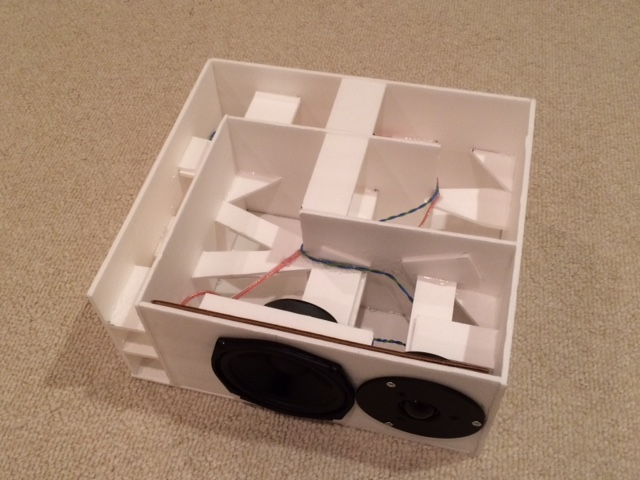
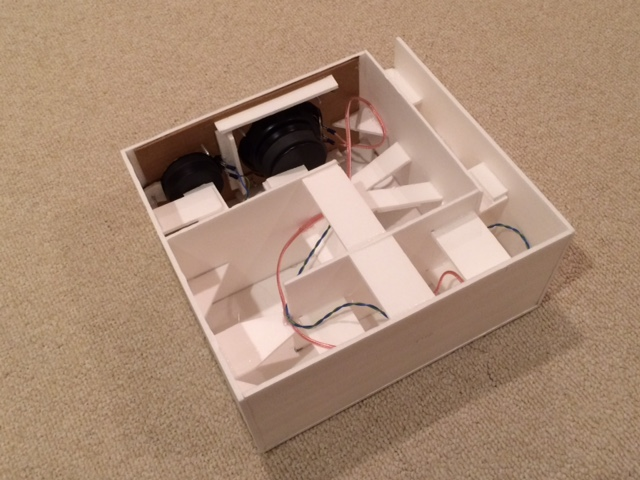
Stuffing plan (adding stuffing in final leg transforms to aperiodic TL):
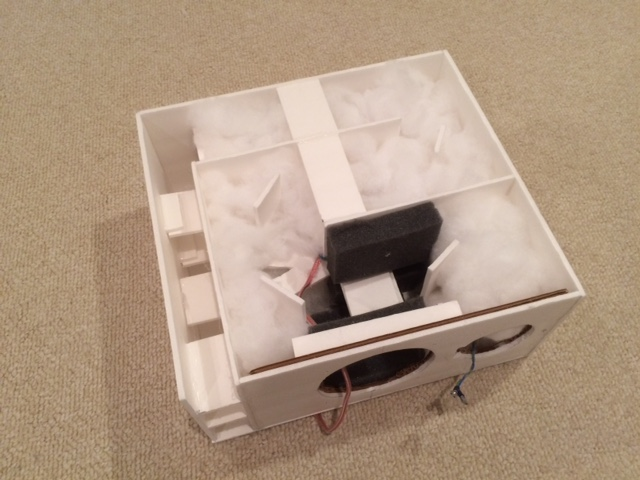
Here is the completed speaker:
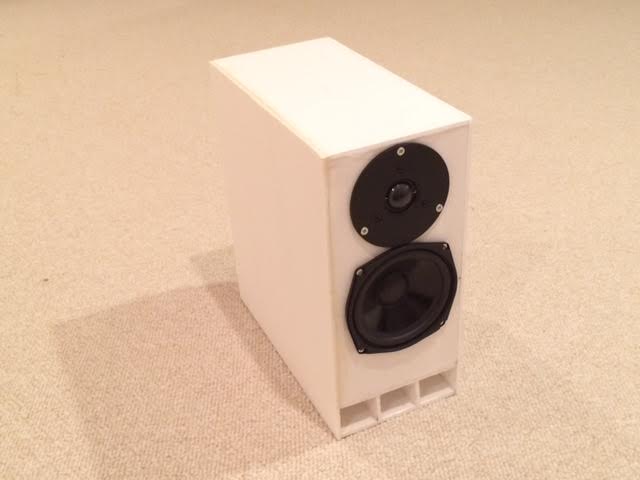
And here are the measurements using a miniDSP and TPA3116D2 amps for an active 2-way. I am using 1st order electrical HPF at 2kHz on the DC28F and a 4th order BW low pass at 1kHz on the DC130A to get an acoustic XO of about 1350Hz. The slopes are quasi-Harsch and allow somewhat of a time-coherent output. I will refine the XO later but these are just to get started.
Raw measurement of the woofer in the TL running full range:
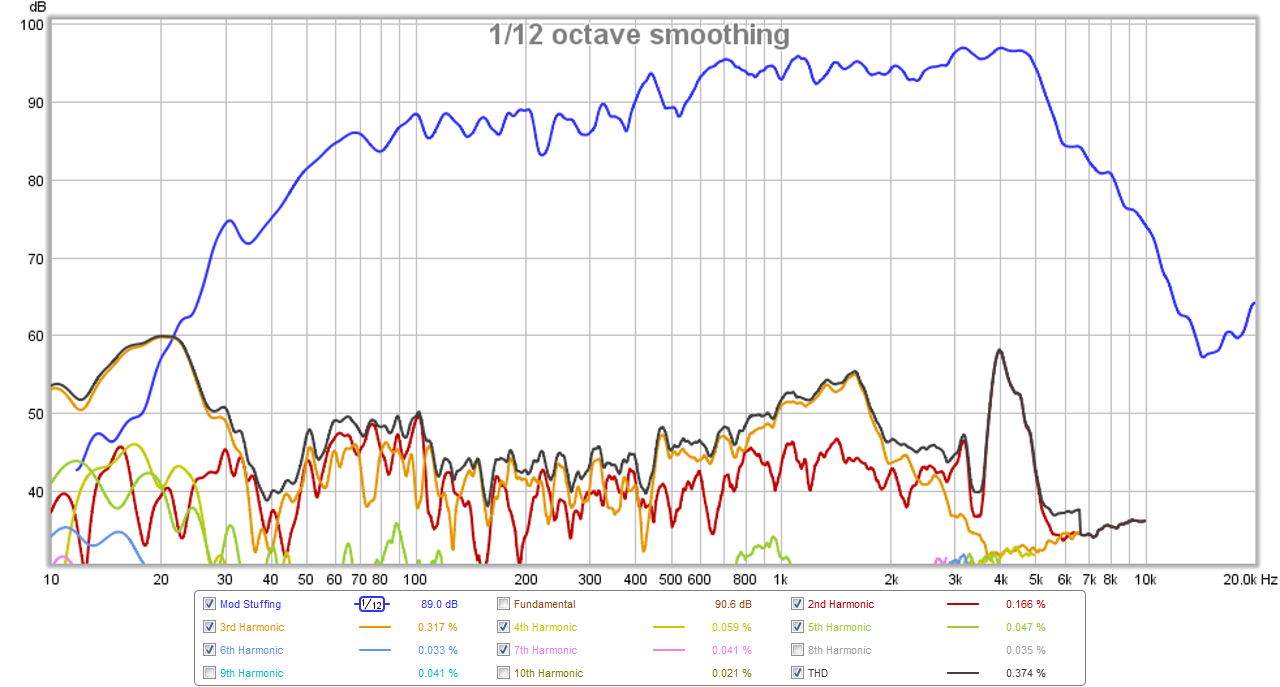
Frequency response showing XO profiles:
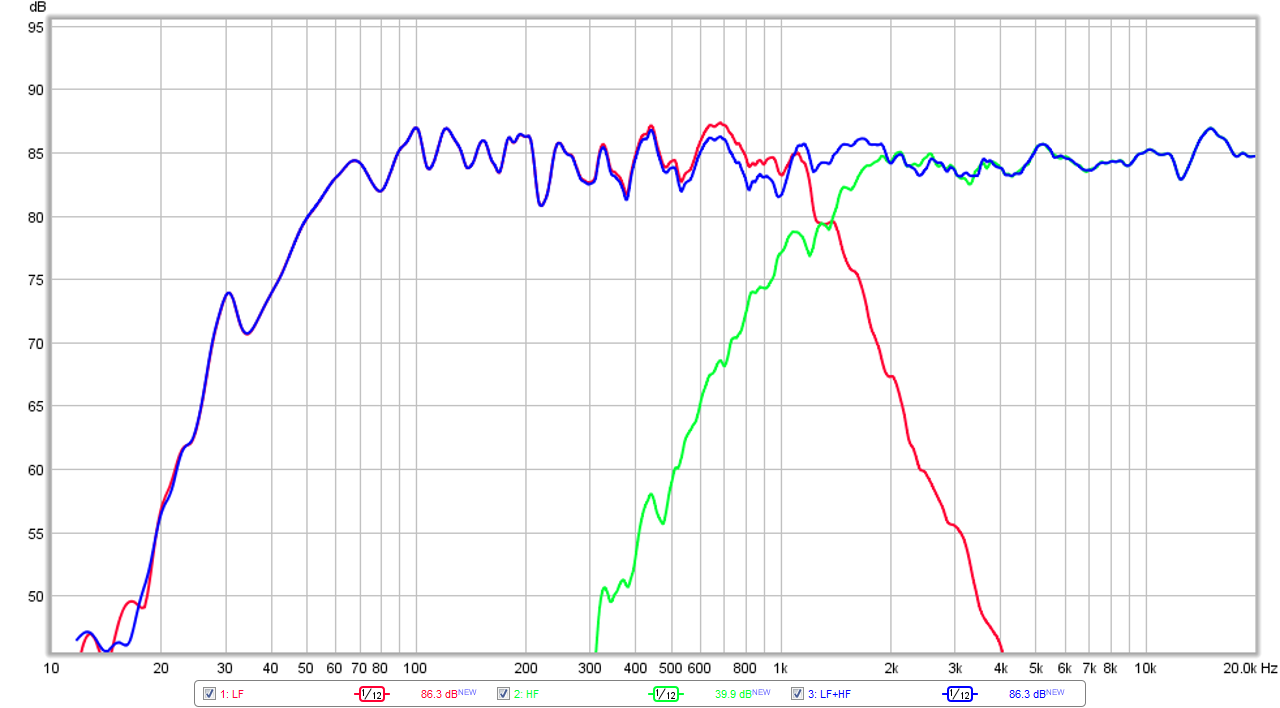
Harmonic Distortion:
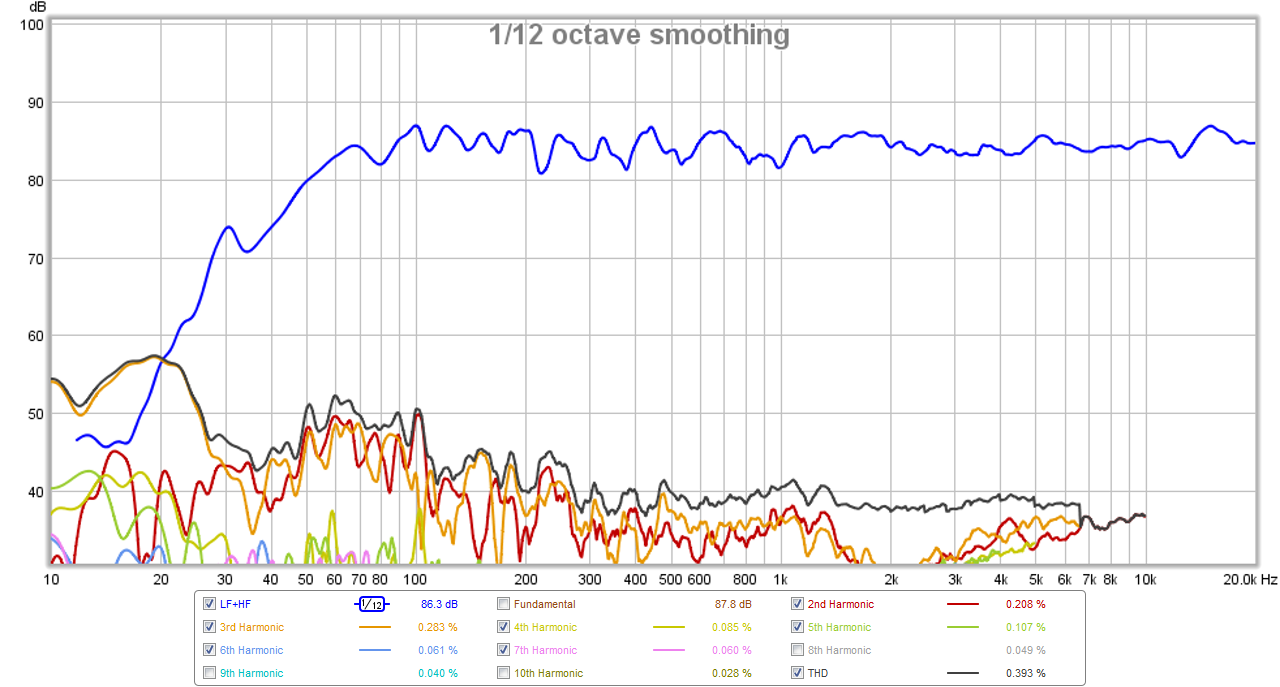
Phase:
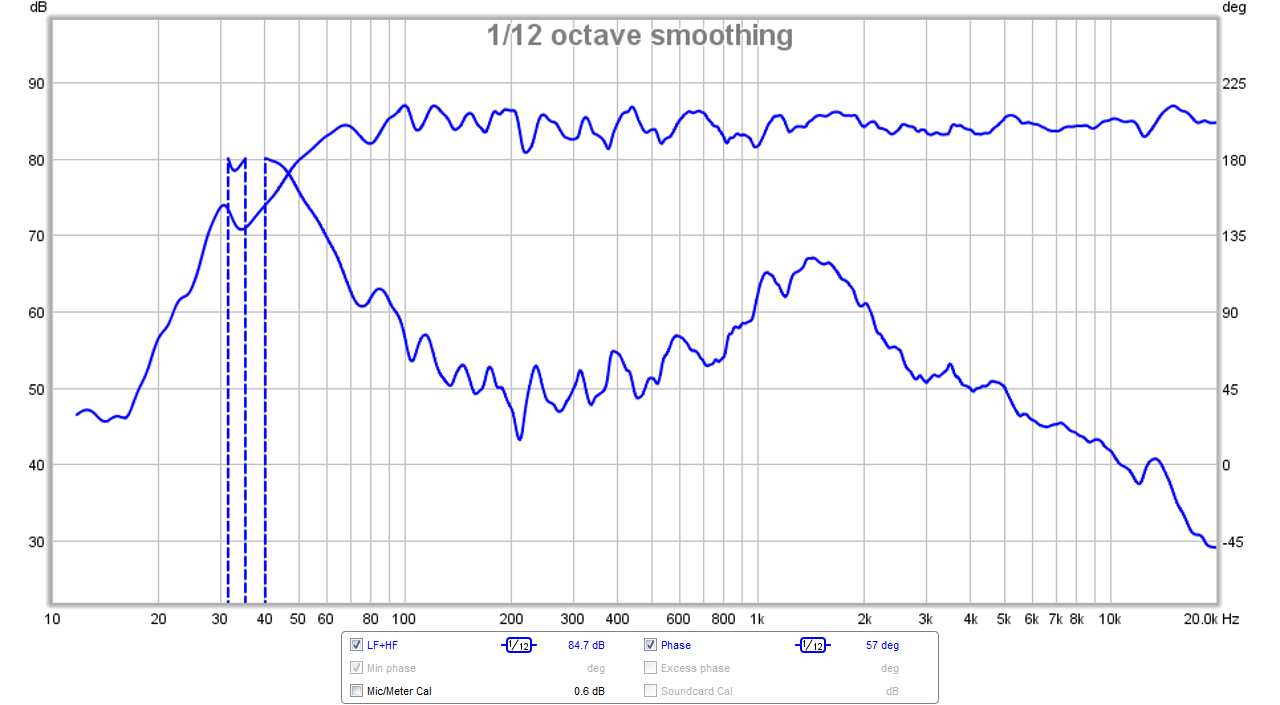
Impulse Response (there is a slight rise and wiggle before the main pulse due to the time delay on the tweeter to get it to be quasi transient perfect with the woofer):
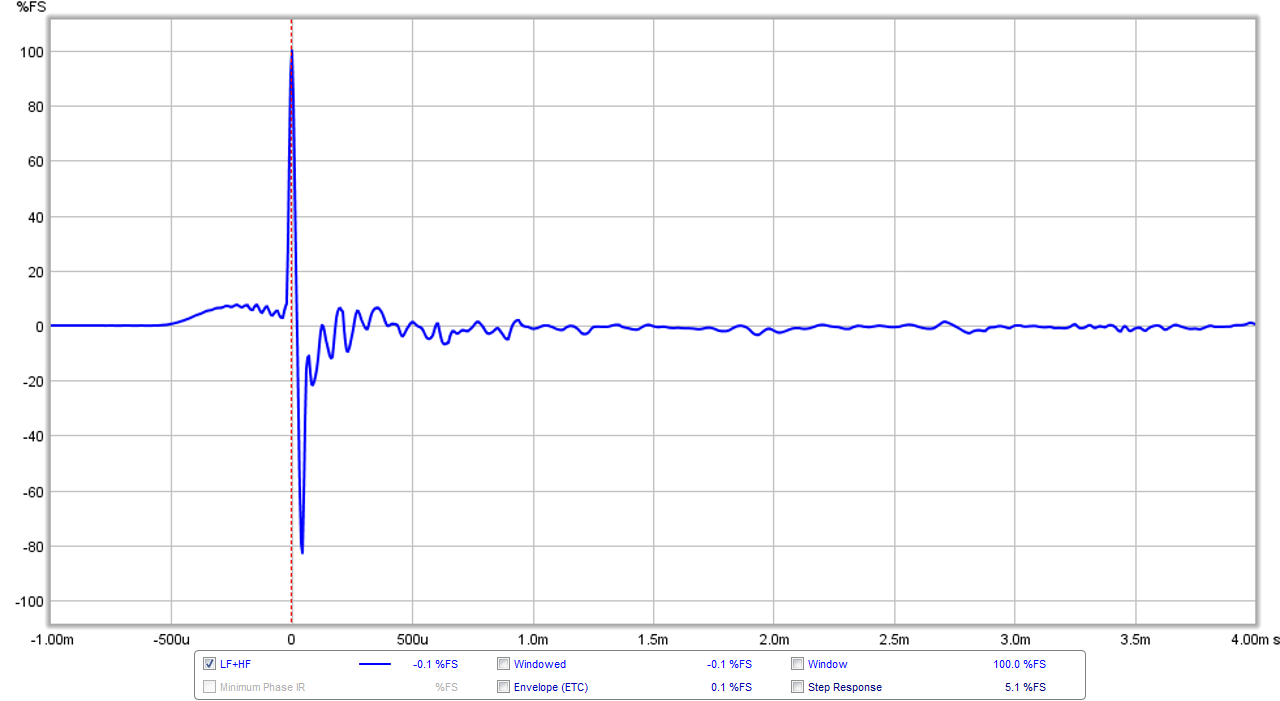
Group Delay (with 1/2oct smoothing for clarity) is about 6.7ms at 50Hz:
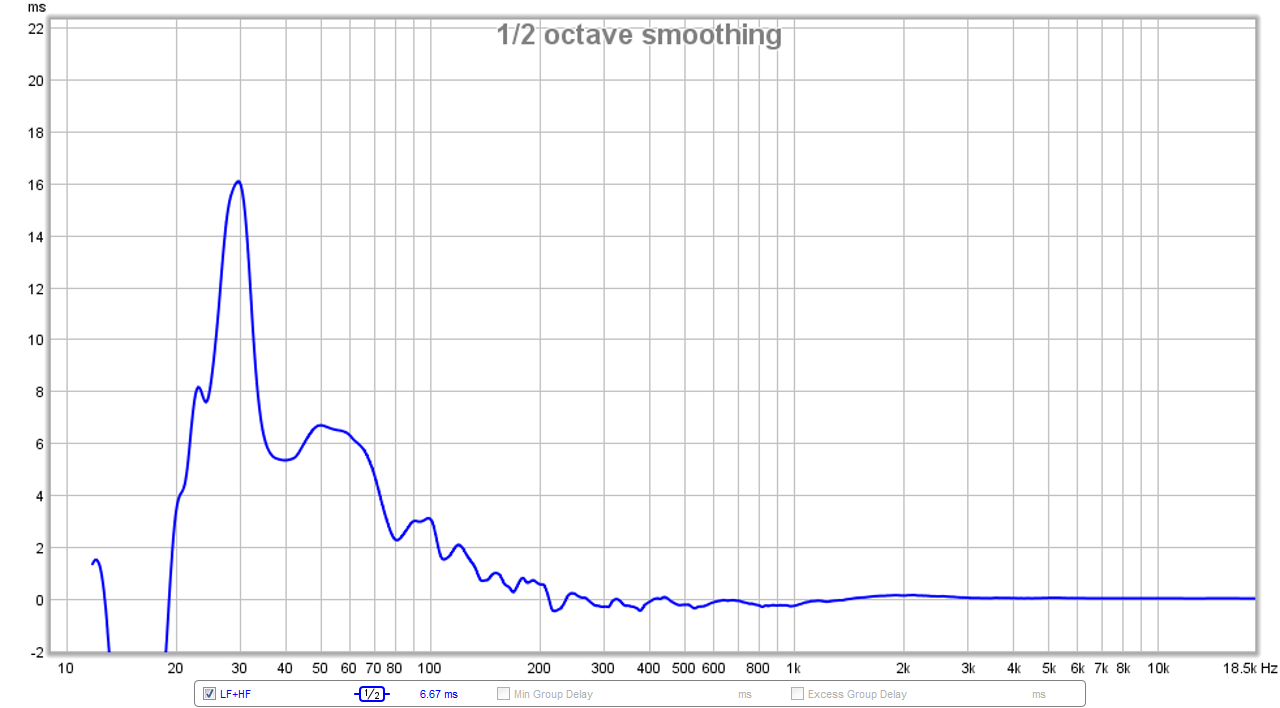
I did take impedance sweeps and they look a lot like the mild double bump prediction above.
The TL sounds very nice - the transients are well aligned in time between the two drivers, the bass is clear and precise without the muddiness of a reflex, the mids are articulate and pleasing, and the highs of the DC28F are excellent - very smooth, transparent, engaging, with no sibillance or harshness. I still need to do more work to refine the XO with careful measurements and simulation in PCD, then transfer to miniDSP rather than doing the XO "by eye". I think I might move the XO up towards the 2kHz point but see that there is additional HD from the woofer there to avoid. If I have time, I may even try to design my first passive XO to see how that looks. Of course it won't be transient perfect given the flush baffle.
I am quite happy with how these turned out and am considering a thin 3/16in Sureply wood baffle to permit the drivers a better mount.
Edit 10/31/15: Polar data shown has tweeter rebated and brillo pad diffraction reducers installed
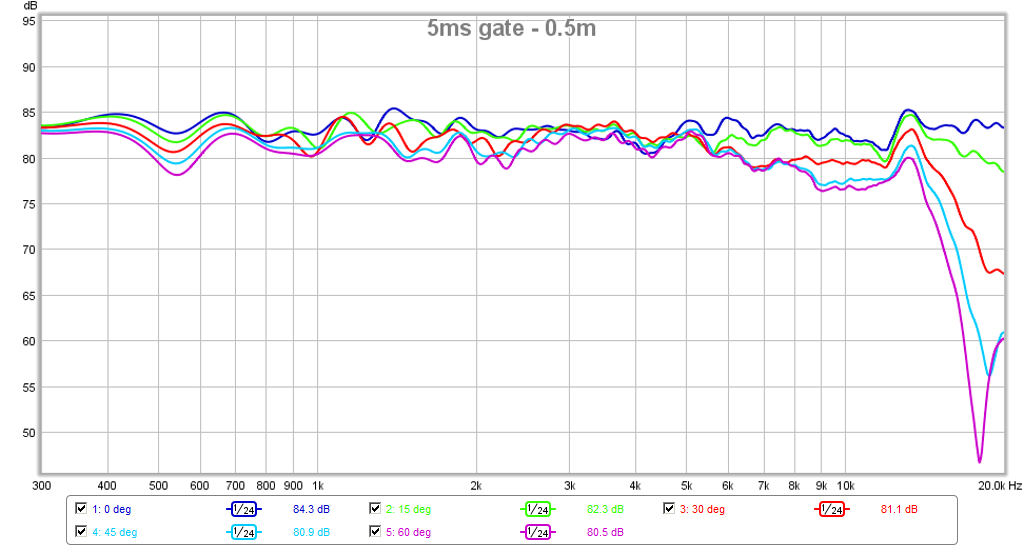
Edit 10/31/15 - latest Measurements with 2kHz XO and rebated tweeter with brillo pad diffraction control - sounds great and settings are now"locked down" for enjoyment (and to build stereo pair):
XO plot:
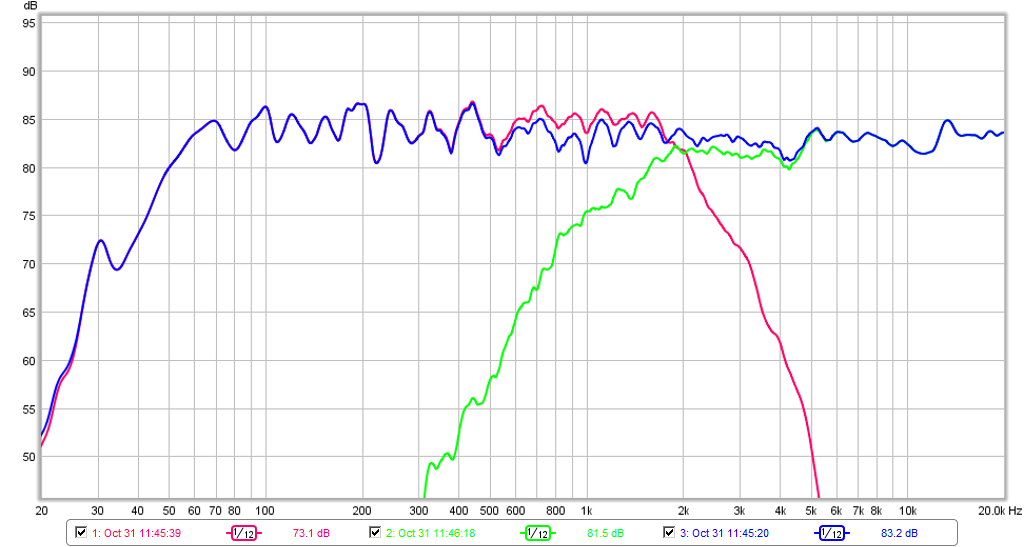
Phase - +/-23deg over 150Hz to 15kHz :
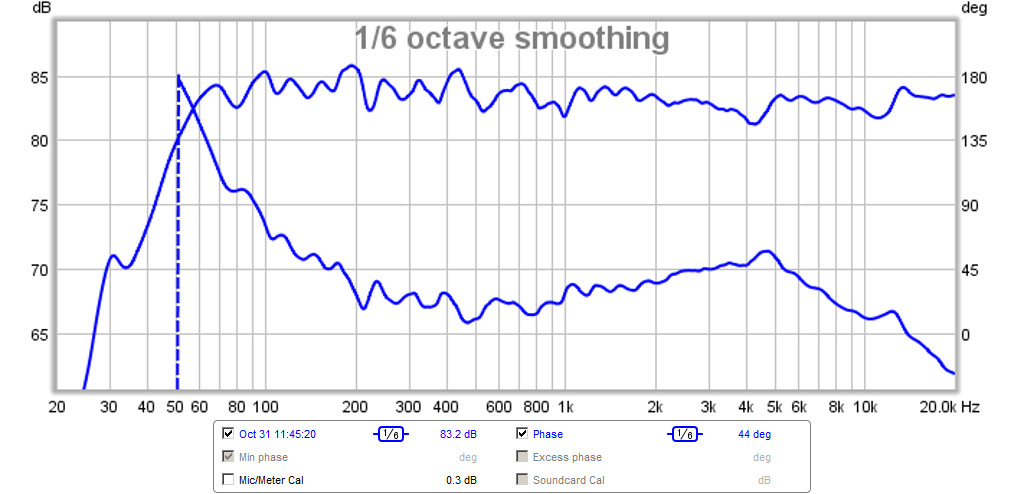
Harmonic Distortion - about 1.4% at 50Hz at normal listening levels:
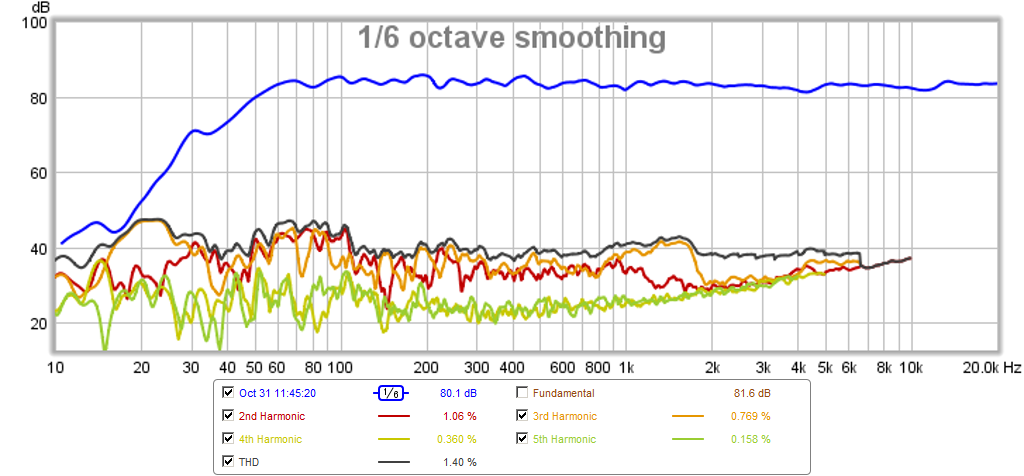
Impulse Response/Step Response - very nice:
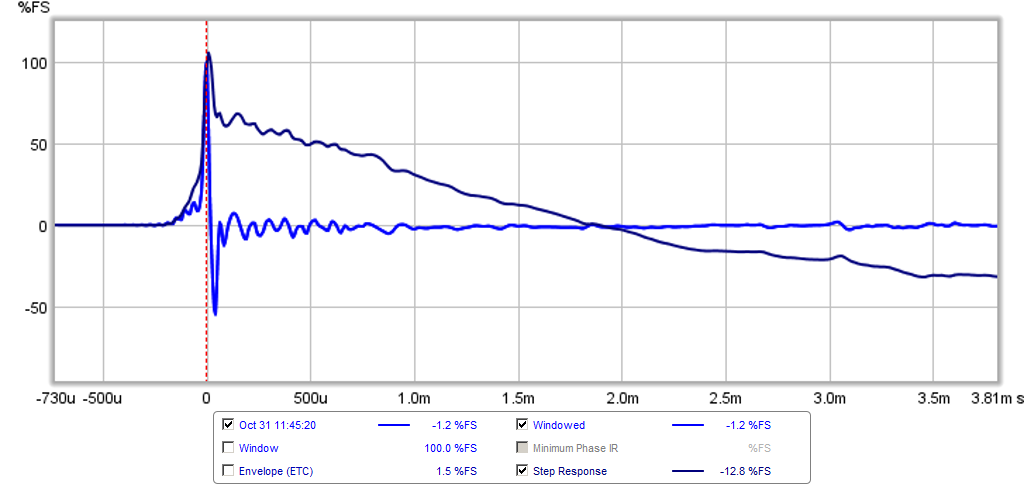
Group Delay (8.6ms at 50Hz - increased 2ms due to BW1 HPF at 32Hz):

http://www.diyaudio.com/forums/multi-way/281281-pmc-tl-stuffing.html
The speaker that inspired this was the PMC TB-1:
An externally hosted image should be here but it was not working when we last tested it.
Which has a 48in long internal path TL with the following damping scheme, which I think provides a borderline critically-damped aperiodic TL based on the measurements I have seen on-line:

There was a rather lengthy debate in that thread about whether or not the TB1 follows Bailey's TL approach and whether or not a proper TL should have single or double impedance peak. Rather than debate it, I decided to model it.
I then went on to model and design my own little TL box to study the effect of damping but using drivers I had on-hand: a Dayton Classic Series DC130A-8 5.25in midwoofer and a Dayton DC28F-8 silk dome tweeter. Both of these drivers actually have quite nice published and measured performance specs and are great sounding high-value drivers. You might be hard pressed to find another 5.25in class midwoofer with the same performance for $20. Similarly, the DC28F is an extremely smooth sounding soft dome with low distortion and flat frequency response.
Anyhow, my design constraints were to use approximately the same 48in long TL that the PMC TB-1 has, and about the same physical format. I put the vent in an up-firing position at first, but eventually went with forward firing to gain a few dB of sensitivity in the bass. I also wanted a tuning frequency fb of about 60Hz - 80Hz depending on the damping scheme used.
The design of the TL was as follows with a 6.0in wide internal dimension:

The predicted frequency response for this TL depended heavily on the amount of stuffing inside. Here are 3 cases of light, moderate, and dense stuffing. As expected, each case is a tradeoff in bass extension and SPL for light damping with lower group delay and improved transient response with dense stuffing. The predicted impedance curves go from double peak for light stuffing, to single peak for dense stuffing. The dense case tends to an aperiodic TL.
Light stuffing:

Moderate stuffing:

Dense stuffing:

Here are the corresponding Group Delays for the light to dense stuffing, the GD goes from 16ms down to under 5ms at 50Hz which is about the same as a sealed cabinet, but with deeper bass extension.
Light:

Dense:

Here is the predicted impedance for light stuffing:

Moderate stuffing:

Dense stuffing:

The predicted speaker cone excursion goes from a classic double peak 4th order:

To what you would see in an aperiodic TL or a sealed cabinet:

So these plots intrigued me and I decided to go with a prototype build in foam core. I was aiming for the moderate to dense case somewhere in between. I thought it important to get at least a -3dB point at 80Hz to get a sense of some bass output. I redid the model with front exit vent and the stuffing plan closer to how I will implement it using loosely teased out polyfill. Here is the predicted frequency response with a 2kHz XO and baffle step loses included:

And here is the predicted GD:

If stuffing is added to the final leg, here is the predicted response - about 80Hz f3:

With about 7ms GD at 50Hz:

With a semi-bordering on aperiodic TL impedance peak with a mild double bump:

Anyhow that was the goal and here is the build process:


Stuffing plan (adding stuffing in final leg transforms to aperiodic TL):

Here is the completed speaker:

And here are the measurements using a miniDSP and TPA3116D2 amps for an active 2-way. I am using 1st order electrical HPF at 2kHz on the DC28F and a 4th order BW low pass at 1kHz on the DC130A to get an acoustic XO of about 1350Hz. The slopes are quasi-Harsch and allow somewhat of a time-coherent output. I will refine the XO later but these are just to get started.
Raw measurement of the woofer in the TL running full range:

Frequency response showing XO profiles:

Harmonic Distortion:

Phase:

Impulse Response (there is a slight rise and wiggle before the main pulse due to the time delay on the tweeter to get it to be quasi transient perfect with the woofer):

Group Delay (with 1/2oct smoothing for clarity) is about 6.7ms at 50Hz:

I did take impedance sweeps and they look a lot like the mild double bump prediction above.
The TL sounds very nice - the transients are well aligned in time between the two drivers, the bass is clear and precise without the muddiness of a reflex, the mids are articulate and pleasing, and the highs of the DC28F are excellent - very smooth, transparent, engaging, with no sibillance or harshness. I still need to do more work to refine the XO with careful measurements and simulation in PCD, then transfer to miniDSP rather than doing the XO "by eye". I think I might move the XO up towards the 2kHz point but see that there is additional HD from the woofer there to avoid. If I have time, I may even try to design my first passive XO to see how that looks. Of course it won't be transient perfect given the flush baffle.
I am quite happy with how these turned out and am considering a thin 3/16in Sureply wood baffle to permit the drivers a better mount.
Edit 10/31/15: Polar data shown has tweeter rebated and brillo pad diffraction reducers installed

Edit 10/31/15 - latest Measurements with 2kHz XO and rebated tweeter with brillo pad diffraction control - sounds great and settings are now"locked down" for enjoyment (and to build stereo pair):
XO plot:

Phase - +/-23deg over 150Hz to 15kHz :

Harmonic Distortion - about 1.4% at 50Hz at normal listening levels:

Impulse Response/Step Response - very nice:

Group Delay (8.6ms at 50Hz - increased 2ms due to BW1 HPF at 32Hz):

Last edited:
V nice indeed
want to do something similar with this Faital driver FaitalPRO | LF Loudspeakers | 5FE120
and the Seas 22TFF
Like your Dayton choice v smooth response and about £20 each in the uk.
want to do something similar with this Faital driver FaitalPRO | LF Loudspeakers | 5FE120
and the Seas 22TFF
Like your Dayton choice v smooth response and about £20 each in the uk.
V nice indeed
want to do something similar with this Faital driver FaitalPRO | LF Loudspeakers | 5FE120
and the Seas 22TFF
Like your Dayton choice v smooth response and about £20 each in the uk.
Good choice! That was my backup driver and have simulated it as well. Very good performer for a TL. Let me see if I can dig up the sims for you - it might be a drop in replacement for DC130A.
TL Design for 5FE120
This driver is basically almost a drop-in fit for this TL design. Just change the internal width to 5.5in (from 6.0) and you are good to go. About the same sensitivity vs the DC130A-8 but with 5mm of xmax so ultimate SPL should be higher. Nice driver - I hope to try one someday soon.
Here is predicted frequency response with moderate stuffing, 67Hz f3:
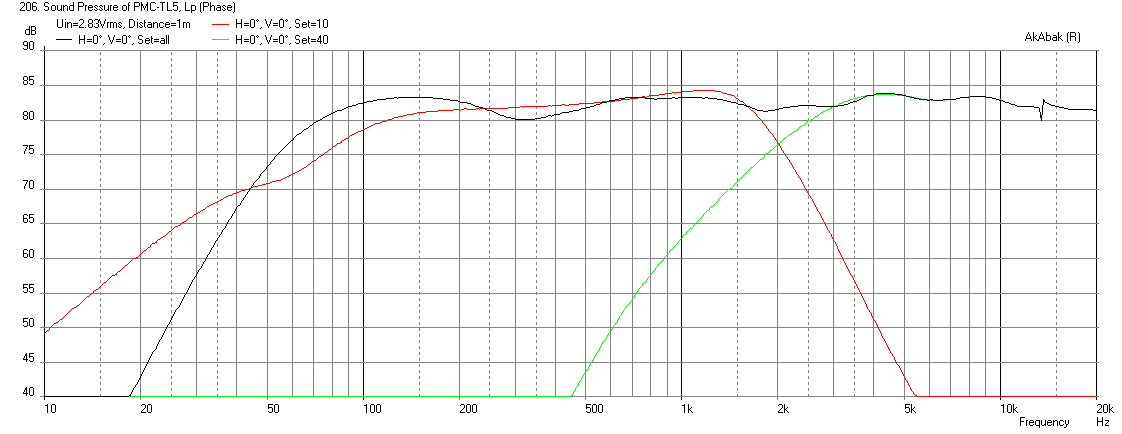
Here is predicted group delay, about 6 to 8ms depending on stuffing:

Here is the impedance:

I say go for it!
This driver is basically almost a drop-in fit for this TL design. Just change the internal width to 5.5in (from 6.0) and you are good to go. About the same sensitivity vs the DC130A-8 but with 5mm of xmax so ultimate SPL should be higher. Nice driver - I hope to try one someday soon.
Here is predicted frequency response with moderate stuffing, 67Hz f3:

Here is predicted group delay, about 6 to 8ms depending on stuffing:

Here is the impedance:

I say go for it!
Attachments
Hi xrk971, nicely done!
Could you please post nearfield measurements of the woofer and the port? Great would be a scaled nearfield measurement of port and woofer (adjusted sound pressure using the port and cone surface area). If possible a nearfield mesurement of the CB (with closed port) would be great.
And finally, a impedance measurement of the TL would be great too. I'm curious about the difference of the CB and the TL.
regards,
Armin
Could you please post nearfield measurements of the woofer and the port? Great would be a scaled nearfield measurement of port and woofer (adjusted sound pressure using the port and cone surface area). If possible a nearfield mesurement of the CB (with closed port) would be great.
And finally, a impedance measurement of the TL would be great too. I'm curious about the difference of the CB and the TL.
regards,
Armin
I like it.
It kinda disappears which I mean in the best possible sense ie it doesn't draw attention to itself. I've crossed it in at about 3.4kHz, LR2.
I didn't sim anything and designed the crossover (what there is of one) just using manufacturers data. It was just meant as a rough and ready student system for my daughter but when I finished them I couldn't stop listening to them which in my book is a good sign.
In a direct comparison I preferred the Faital/SEAS to my Rogers DB101 which feature a 5" Audax aerogel midwoofer and a cheap mylar tweet crossed 1st order at 5k.
They are about the same size as each other.
Currently building another two pairs.
My better half wants a pair for the bedroom or garden and a mate of mine (a recording musician for what it's worth) also asked for a couple.
It kinda disappears which I mean in the best possible sense ie it doesn't draw attention to itself. I've crossed it in at about 3.4kHz, LR2.
I didn't sim anything and designed the crossover (what there is of one) just using manufacturers data. It was just meant as a rough and ready student system for my daughter but when I finished them I couldn't stop listening to them which in my book is a good sign.
In a direct comparison I preferred the Faital/SEAS to my Rogers DB101 which feature a 5" Audax aerogel midwoofer and a cheap mylar tweet crossed 1st order at 5k.
They are about the same size as each other.
Currently building another two pairs.
My better half wants a pair for the bedroom or garden and a mate of mine (a recording musician for what it's worth) also asked for a couple.
Last edited:
CharlesDarwin,
How were you loading the Faitals for bass? Sealed or BR? The TL with stuffing has a decidedly better bass presentation than BR. I have always been fond of Linkwitz transform on sealed to get extension and low GD, but through my modeling and measurements, have convinced myself that if I were to go with a passive XO, the damped TL provides the depth of the BR but with the low GD of a sealed LT woofer.
How were you loading the Faitals for bass? Sealed or BR? The TL with stuffing has a decidedly better bass presentation than BR. I have always been fond of Linkwitz transform on sealed to get extension and low GD, but through my modeling and measurements, have convinced myself that if I were to go with a passive XO, the damped TL provides the depth of the BR but with the low GD of a sealed LT woofer.
BR.
I think they are quite a bit smaller than your TLs. About 5.5L once I subtract driver, ports and xover parts.
5.5L is tiny indeed. That's about the size of my Boston HD5's that I modified to become FAST units with AC130F1 and FR58EX on top. Nice size.
2kHz XO
So I decided to try moving the XO point to 2kHz. The responses on both drivers is quite smooth so it was an easy matter to just go in and nudge the electrical XO points upwards. I ended up 1900Hz BW4 LPF for the DC130A and 2500Hz BW1 HPF on the DC28F with a 0.40ms delay on the tweeter. I also put a BW1 HPF at 32Hz on the woofer to limit over-excursion and reduce HD at the low frequencies. This had a +2ms penalty on group delay at 50Hz, ending up at 8.7ms but I think is worth it. The acoustic XO is exactly at 2kHz.
Measured Frequency Response and Acoustic XO plot:
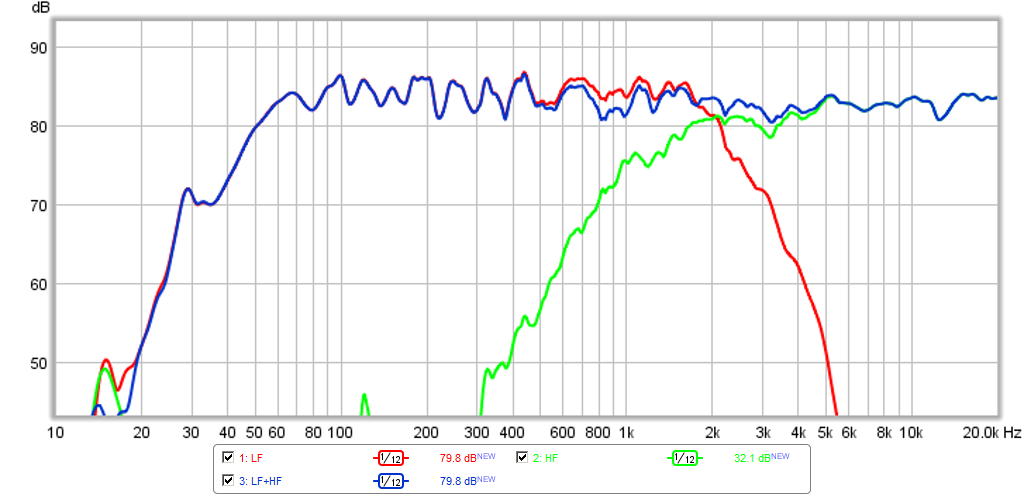
Measured Harmonic Distortion - note increased HD at 1.7kHz due to woofer - but a good trade-off for better overall sound:
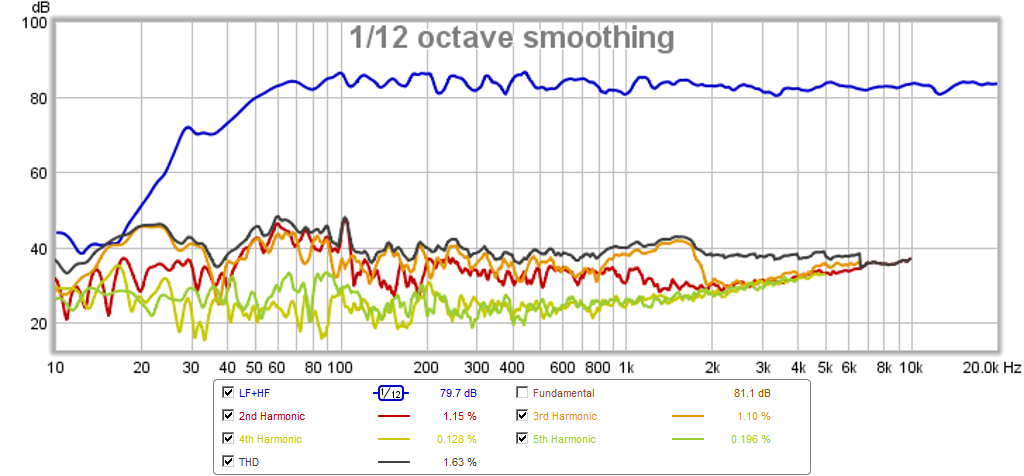
Measured Group Delay (increased 2ms due to 32Hz HPF:
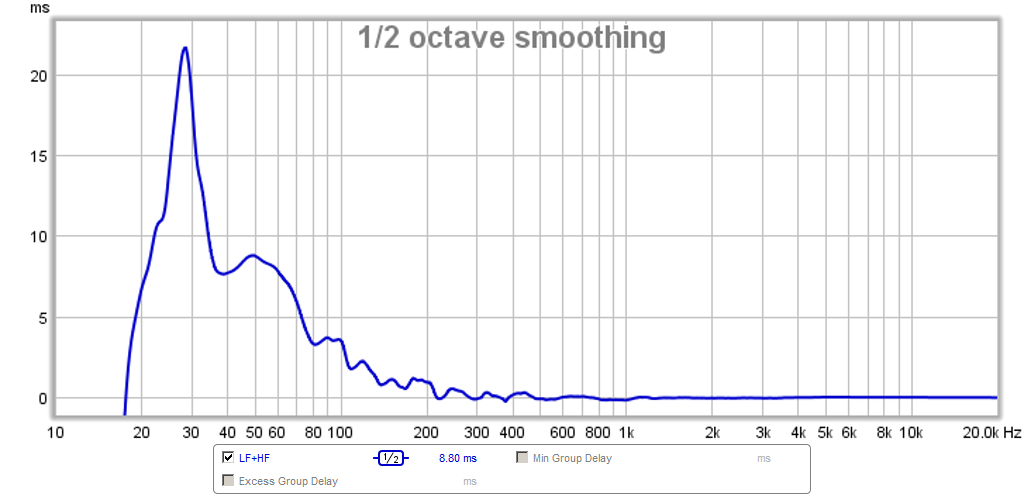
Measured Phase:
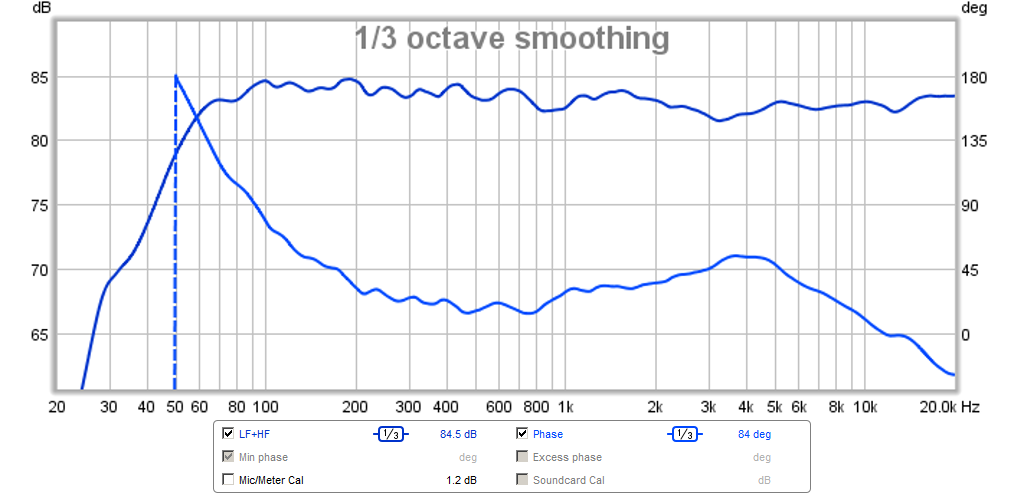
Measured Impulse Response and Step Response - pretty much this is as good as it gets for a basic eyeballed Harsch XO.
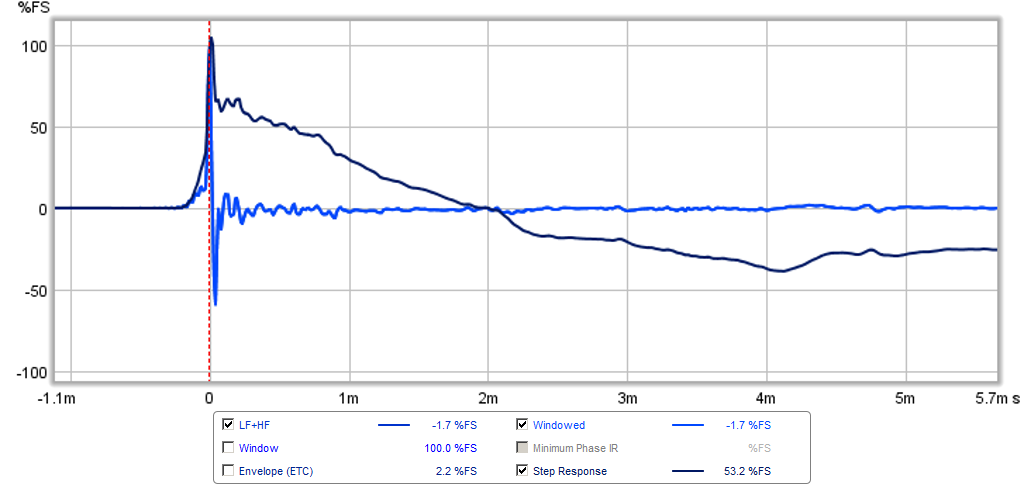
The time alignment now is excellent and I can hear it when playing the percussion on the jazz tracks as you will also hear when you listen to the clips. I really like the XO much better here at 2kHz despiite the increased HD bump from the woofer at 2kHz. The woofer handles much more of the mid range with real authority and it lets the little tweeter do its job with the shimmer and detail. Here are some sound clips of jazz piano/bass/drums, and female vocals. Change the .asc extension to .mp3 to play.
So I decided to try moving the XO point to 2kHz. The responses on both drivers is quite smooth so it was an easy matter to just go in and nudge the electrical XO points upwards. I ended up 1900Hz BW4 LPF for the DC130A and 2500Hz BW1 HPF on the DC28F with a 0.40ms delay on the tweeter. I also put a BW1 HPF at 32Hz on the woofer to limit over-excursion and reduce HD at the low frequencies. This had a +2ms penalty on group delay at 50Hz, ending up at 8.7ms but I think is worth it. The acoustic XO is exactly at 2kHz.
Measured Frequency Response and Acoustic XO plot:

Measured Harmonic Distortion - note increased HD at 1.7kHz due to woofer - but a good trade-off for better overall sound:

Measured Group Delay (increased 2ms due to 32Hz HPF:

Measured Phase:

Measured Impulse Response and Step Response - pretty much this is as good as it gets for a basic eyeballed Harsch XO.

The time alignment now is excellent and I can hear it when playing the percussion on the jazz tracks as you will also hear when you listen to the clips. I really like the XO much better here at 2kHz despiite the increased HD bump from the woofer at 2kHz. The woofer handles much more of the mid range with real authority and it lets the little tweeter do its job with the shimmer and detail. Here are some sound clips of jazz piano/bass/drums, and female vocals. Change the .asc extension to .mp3 to play.
Attachments
-
PMCTL4-DC130A-DC28F-2kXO-jazz-trio-clip-1.asc1.7 MB · Views: 212
-
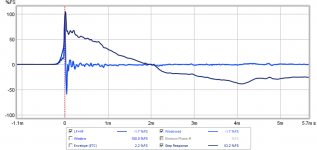 pmctl4-2khz-ir-sr.png56.7 KB · Views: 4,065
pmctl4-2khz-ir-sr.png56.7 KB · Views: 4,065 -
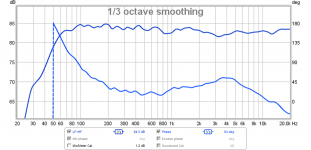 pmctl4-2khz-gd.png78.5 KB · Views: 3,805
pmctl4-2khz-gd.png78.5 KB · Views: 3,805 -
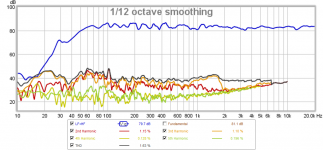 pmctl4-2khz-hd.png141.7 KB · Views: 3,788
pmctl4-2khz-hd.png141.7 KB · Views: 3,788 -
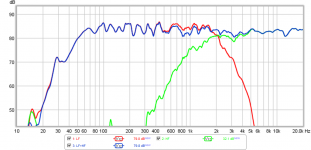 pmctl4-2khz-xo.png82.5 KB · Views: 3,803
pmctl4-2khz-xo.png82.5 KB · Views: 3,803 -
PMCTL4-DC130A-DC28F-2kXO-vocals-clip-2.asc1.7 MB · Views: 130
-
PMCTL4-DC130A-DC28F-2kXO-jazz-drums-bass-piano-clip-3.asc1.7 MB · Views: 144
-
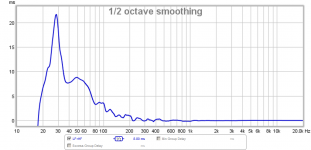 pmctl4-2khz-gd2.png57.8 KB · Views: 3,751
pmctl4-2khz-gd2.png57.8 KB · Views: 3,751
Last edited:
The little 19mm SEAS has IMO the advantage that it
doesn't need any padding when paired with the Faital.
Hi,
That implies your ignoring diffraction/BSC, which is never good.
You can do a lot better than current with a proper x/o design.
rgds, sreten.
FWIW the Rogers DB101 has no BSC either.
Last edited:
Hi,
That implies your ignoring diffraction/BSC, which is never good.
You can do a lot better than current with a proper x/o design.
rgds, sreten.
FWIW the Rogers DB101 has no BSC either.
Very much so.
Given that my speakers inevitably find themselves with their back on a wall and in this case sitting on a desk as well if I'd implement BSC the bass would be way too hot.
It would result in a horrible and inefficient mess that sounds like crap.
With my current main speakers (Tannoy DC +12" Volt TL), which sit in corners, I had to reduce bass by nearly 9dB to get a flat response at my listening position.
If the graphs are correct the Faital is in reality around 3db more sensitive than that tweet
Sent from my iPhone using Tapatalk
You're right.
I used an air-cored inductor for the low pass with a highish DCR to make up for that.
You're right.
I used an air-cored inductor for the low pass with a highish DCR to make up for that.
The SEAS 19TFF looks very nice and smooth. The tweeter appears to be 87dB sensitive and the 5FE120 appears to be 90dB sensitive. Would you typically have about 5dB baffle step loss so that the tweeter would still need to get cut by a note 2dB? I guess I am assuming 4pi placement and measurement - maybe you have room boundary reinforcement for 2pi?
My monitors are currently in 29in tall stands about 5ft from back wall so effectively 4pi. I wonder what kind of bass boost it would get if closer to back wall? Would probably get a reflection cancellation somewhere.
Last edited:
My daughter uses them as nearfields sitting on a desk with their backs to a wall.
There will inevitably be some ripple in the response but considering their placement this is small compared to implementing BSC which would result in bloated, messy low end response.
None of my speakers will ever be in free space (4pi), the wife sees to that*.
It was hard enough to get her to accept my main speakers (190L or there abouts) so they ended up in the room corners. As I said above in my response to sreten I had to knock the bass back by 8dB to get a flat response at the listening position.
If I had the cash and space for a dedicated listening room I'd soffit mount them.
*Personally I don't like free standing speakers either. They become to visually dominant which lessens my enjoyment by ruining the auditory illusion. Ideally I'd want speakers to be invisible hence my preference of soffit mounting if it were possible.
There will inevitably be some ripple in the response but considering their placement this is small compared to implementing BSC which would result in bloated, messy low end response.
None of my speakers will ever be in free space (4pi), the wife sees to that*.
It was hard enough to get her to accept my main speakers (190L or there abouts) so they ended up in the room corners. As I said above in my response to sreten I had to knock the bass back by 8dB to get a flat response at the listening position.
If I had the cash and space for a dedicated listening room I'd soffit mount them.
*Personally I don't like free standing speakers either. They become to visually dominant which lessens my enjoyment by ruining the auditory illusion. Ideally I'd want speakers to be invisible hence my preference of soffit mounting if it were possible.
Polar Measurements
I tried a polar measurement with the tweeter just surface mounted no rebate and it looked terrible with sawtooth diffraction. So I added some foam core sheet trim to flush mount it - like it was rebated. I also added some pieces of Scotchbrite scouring pads glued around in a rectangular pattern a la LS5/3A. The measurements now look outstanding. I was using some EQ before to get the on-axis flat response but off-axis the diffraction was still there. So now there is no EQ except for a very mild +1.5dB Q=1.2 at 5100Hz. The data was collected with a 0.5m mic distance and gated 0.5ms before and 5ms after.
The variation is about 5dB up to about 13kHz and mostly less than that. It also shows that the tweeter XO frequency integrates very well with the woofer at 2kHz. Walking around the room it sounds very uniform and I imagine in stereo, the sweet spot would be pretty wide. These budget Dayton DC28F's are very nice performers.
The legend shows values for the cursor at 6kHz.

I tried a polar measurement with the tweeter just surface mounted no rebate and it looked terrible with sawtooth diffraction. So I added some foam core sheet trim to flush mount it - like it was rebated. I also added some pieces of Scotchbrite scouring pads glued around in a rectangular pattern a la LS5/3A. The measurements now look outstanding. I was using some EQ before to get the on-axis flat response but off-axis the diffraction was still there. So now there is no EQ except for a very mild +1.5dB Q=1.2 at 5100Hz. The data was collected with a 0.5m mic distance and gated 0.5ms before and 5ms after.
The variation is about 5dB up to about 13kHz and mostly less than that. It also shows that the tweeter XO frequency integrates very well with the woofer at 2kHz. Walking around the room it sounds very uniform and I imagine in stereo, the sweet spot would be pretty wide. These budget Dayton DC28F's are very nice performers.
The legend shows values for the cursor at 6kHz.

Attachments
Last edited:
- Home
- Loudspeakers
- Multi-Way
- Low-Cost PMC-inspired TL Monitor with DC130A and DC28F
